My
List |
Addition Date
|
Target
|
Mission
|
Instrument
|
Size
|

|
2004-03-13 |
Sol (our sun)
|
Mars Exploration Rover (MER)
|
Panoramic Camera
|
1080x360x1 |
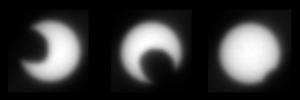
|
-
PIA05554:
-
Martian Moon Eclipses Sun, in Stages
Full Resolution:
TIFF
(206 kB)
JPEG
(13.92 kB)
|

|
2010-12-27 |
Sol (our sun)
|
Mars Exploration Rover (MER)
|
Panoramic Camera
|
640x350x3 |

|
-
PIA13736:
-
Sunset Watched by Opportunity, November 2010

Full Resolution:
TIFF
(672.9 kB)
JPEG
(7.169 kB)
|

|
2010-12-27 |
Sol (our sun)
|
Mars Exploration Rover (MER)
|
Panoramic Camera
|
640x350x3 |
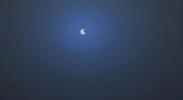
|
-
PIA13737:
-
Phobos Passes in Front of Sun's Face, Nov. 9, 2010

Full Resolution:
TIFF
(672.9 kB)
JPEG
(6.111 kB)
|

|
2016-05-27 |
|
Herschel Space Observatory
|
PACS
SPIRE
|
2112x1452x3 |
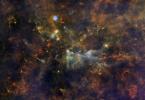
|
-
PIA13500:
-
The Little Fox and the Giant Stars
Full Resolution:
TIFF
(9.204 MB)
JPEG
(393.2 kB)
|

|
2016-10-12 |
Orion
|
Herschel Space Observatory
|
PACS
SPIRE
HIFI
|
5200x7400x3 |

|
-
PIA21073:
-
Ionized Carbon Atoms in Orion
Full Resolution:
TIFF
(80.59 MB)
JPEG
(1.376 MB)
|

|
2013-01-09 |
|
Herschel Space Observatory
|
PACS
|
826x485x3 |
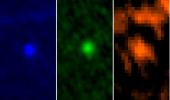
|
-
PIA16675:
-
Herschel's Three-Color View of Asteroid Apophis
Full Resolution:
TIFF
(1.202 MB)
JPEG
(25.73 kB)
|

|
2013-01-22 |
|
Herschel Space Observatory
|
PACS
|
625x643x3 |

|
-
PIA16680:
-
Betelgeuse's Enigmatic Environment
Full Resolution:
TIFF
(1.206 MB)
JPEG
(35.67 kB)
|

|
2009-10-02 |
|
Herschel Space Observatory
|
PACS
SPIRE
|
3403x3327x3 |
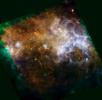
|
-
PIA12251:
-
Awash with Infrared Light
Full Resolution:
TIFF
(33.97 MB)
JPEG
(537.5 kB)
|

|
2010-04-12 |
|
Herschel Space Observatory
|
PACS
SPIRE
|
783x598x3 |
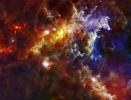
|
-
PIA13028:
-
Big Babies in the Rosette Nebula
Full Resolution:
TIFF
(1.407 MB)
JPEG
(56.69 kB)
|

|
2010-05-06 |
|
Herschel Space Observatory
|
PACS
SPIRE
|
2502x2560x3 |

|
-
PIA13100:
-
Assembly Line of Stars
Full Resolution:
TIFF
(19.24 MB)
JPEG
(524 kB)
|

|
2010-05-06 |
|
Herschel Space Observatory
|
PACS
SPIRE
|
2545x2906x3 |

|
-
PIA13101:
-
Bursting with Stars
Full Resolution:
TIFF
(22.21 MB)
JPEG
(417 kB)
|

|
2010-05-06 |
|
Herschel Space Observatory
|
PACS
SPIRE
|
2000x1997x3 |
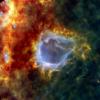
|
-
PIA13102:
-
Galactic Bubble
Full Resolution:
TIFF
(12 MB)
JPEG
(184.7 kB)
|

|
2010-05-11 |
|
Herschel Space Observatory
|
PACS
SPIRE
|
1315x1315x3 |
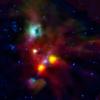
|
-
PIA13109:
-
Big Hole Revealed in Infrared
Full Resolution:
TIFF
(5.193 MB)
JPEG
(98.83 kB)
|

|
2010-09-01 |
|
Herschel Space Observatory
|
PACS
SPIRE
|
860x738x3 |
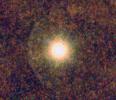
|
-
PIA13358:
-
Water Around a Carbon Star
Full Resolution:
TIFF
(1.906 MB)
JPEG
(96.61 kB)
|

|
2011-07-19 |
|
Herschel Space Observatory
|
PACS
SPIRE
|
2500x2500x3 |
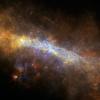
|
-
PIA14400:
-
The Case of the Warped Galactic Ring
Full Resolution:
TIFF
(18.77 MB)
JPEG
(251.5 kB)
|

|
2012-04-04 |
|
Herschel Space Observatory
|
PACS
SPIRE
|
934x956x3 |

|
-
PIA15421:
-
The Action-Packed Centaurus A
Full Resolution:
TIFF
(2.683 MB)
JPEG
(24.94 kB)
|

|
2012-05-11 |
Cygnus-X
|
Herschel Space Observatory
|
PACS
SPIRE
|
5897x2151x3 |
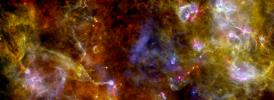
|
-
PIA15626:
-
Cygnus-X: The Cool Swan Glowing in Flight
Full Resolution:
TIFF
(38.05 MB)
JPEG
(963.3 kB)
|

|
2013-01-28 |
M31
|
Herschel Space Observatory
|
PACS
SPIRE
|
2711x2920x3 |

|
-
PIA16682:
-
Cool Andromeda
Full Resolution:
TIFF
(23.76 MB)
JPEG
(510 kB)
|

|
2013-03-05 |
Rosette Nebula
|
Herschel Space Observatory
|
PACS
SPIRE
|
4207x3822x3 |
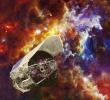
|
-
PIA16871:
-
Herschel's Cool Universe (Artist's Concept)
Full Resolution:
TIFF
(48.27 MB)
JPEG
(1.26 MB)
|

|
2013-03-29 |
|
Herschel Space Observatory
|
PACS
SPIRE
|
1500x1434x3 |

|
-
PIA16883:
-
Churning Out Stars
Full Resolution:
TIFF
(6.456 MB)
JPEG
(182.4 kB)
|

|
2014-06-12 |
NGC 7538
|
Herschel Space Observatory
|
PACS
SPIRE
|
2305x1540x3 |
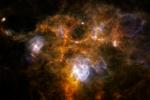
|
-
PIA18452:
-
A Puzzling Cosmic Ring
Full Resolution:
TIFF
(10.65 MB)
JPEG
(170.6 kB)
|

|
2015-05-28 |
|
Herschel Space Observatory
|
PACS
SPIRE
|
1323x1046x3 |
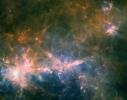
|
-
PIA19340:
-
Herschel's View of G49 Filament
Full Resolution:
TIFF
(4.153 MB)
JPEG
(95.89 kB)
|

|
2012-04-04 |
|
Herschel Space Observatory
|
PACS
SPIRE
XMM-Newton
|
934x956x3 |

|
-
PIA15422:
-
Centaurus A All Prettied Up in Infrared and X-Rays
Full Resolution:
TIFF
(2.683 MB)
JPEG
(38.6 kB)
|

|
2012-01-18 |
|
Herschel Space Observatory
XMM-Newton
|
PACS
SPIRE
XMM-Newton X-ray
|
1352x1353x3 |
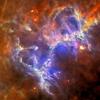
|
-
PIA15260:
-
Herschel Sees Through Ghostly Pillars
Full Resolution:
TIFF
(5.493 MB)
JPEG
(151 kB)
|

|
2012-11-14 |
|
Herschel Space Observatory
XMM-Newton
|
PACS
SPIRE
XMM-Newton X-ray
|
3234x2248x3 |
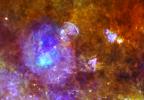
|
-
PIA16464:
-
Life and Death in a Star-Forming Cloud
Full Resolution:
TIFF
(21.82 MB)
JPEG
(446.7 kB)
|

|
2013-12-12 |
|
Herschel Space Observatory
Hubble Space Telescope
|
PACS
WFPC2
|
3864x3864x3 |
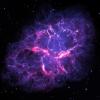
|
-
PIA17563:
-
Crab Nebula, as Seen by Herschel and Hubble
Full Resolution:
TIFF
(44.81 MB)
JPEG
(1.205 MB)
|

|
2009-04-16 |
|
Kepler
|
Photometer
|
2385x2974x3 |

|
-
PIA11983:
-
Where Kepler Sees
Full Resolution:
TIFF
(21.3 MB)
JPEG
(573 kB)
|

|
2009-04-16 |
NGC 6791
|
Kepler
|
Photometer
|
5876x5876x3 |
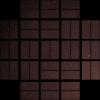
|
-
PIA11984:
-
Kepler's Diamond Mine of Stars
Full Resolution:
TIFF
(103.6 MB)
JPEG
(7.193 MB)
|

|
2009-04-16 |
NGC 6791
|
Kepler
|
Photometer
|
2400x1800x3 |
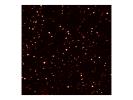
|
-
PIA11985:
-
Host to 'Hot Jupiter'
Full Resolution:
TIFF
(4.327 MB)
JPEG
(185.9 kB)
|

|
2009-04-16 |
NGC 6791
|
Kepler
|
Photometer
|
2400x1800x3 |
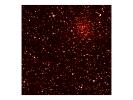
|
-
PIA11986:
-
Cluster of Stars in Kepler's Sight
Full Resolution:
TIFF
(4.327 MB)
JPEG
(387.3 kB)
|

|
2009-09-17 |
|
Planck
|
Planck LFI-HFI
|
2501x1237x3 |
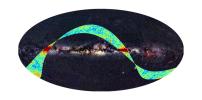
|
-
PIA12206:
-
Planck's First Glimpse at the Universe
Full Resolution:
TIFF
(9.291 MB)
JPEG
(454 kB)
|

|
2010-04-26 |
Perseus
|
Planck
|
Planck LFI-HFI
|
1000x1000x3 |
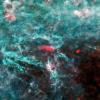
|
-
PIA13065:
-
Planck Sees Perseus
Full Resolution:
TIFF
(3.004 MB)
JPEG
(219.3 kB)
|

|
2010-04-26 |
|
Planck
|
Planck LFI-HFI
|
1000x1000x3 |
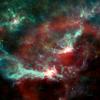
|
-
PIA13066:
-
Planck's View of Orion
Full Resolution:
TIFF
(3.004 MB)
JPEG
(95.21 kB)
|

|
2010-07-06 |
|
Planck
|
Planck LFI-HFI
|
1300x700x3 |
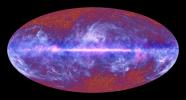
|
-
PIA13239:
-
Planck's View of the Whole Sky
Full Resolution:
TIFF
(2.733 MB)
JPEG
(115.5 kB)
|

|
2012-02-13 |
|
Planck
|
Planck LFI-HFI
|
1024x768x3 |
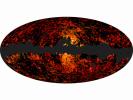
|
-
PIA15228:
-
The Mysterious Galactic Haze seen by Planck
Full Resolution:
TIFF
(2.363 MB)
JPEG
(95.5 kB)
|

|
2012-11-21 |
|
Planck
|
Planck Space Telescope
|
3564x3571x3 |
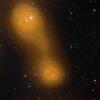
|
-
PIA16466:
-
Bridging Cities of Galaxies
Full Resolution:
TIFF
(38.2 MB)
JPEG
(1.518 MB)
|

|
2013-09-12 |
Sol (our sun)
|
Voyager
|
Plasma Wave Instrument
|
1280x720x3 |
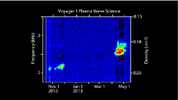
|
-
PIA17045:
-
Voyager Captures Sounds of Interstellar Space

Full Resolution:
TIFF
(2.766 MB)
JPEG
(56.6 kB)
|

|
2004-03-15 |
Sedna
|
|
Samuel Oschin Telescope
|
640x480x5 |
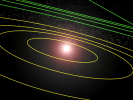
|
-
PIA05565:
-
Sedna Orbit Animation

Full Resolution:
|

|
2004-03-15 |
Sedna
|
|
Samuel Oschin Telescope
|
2000x1500x3 |
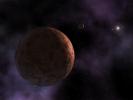
|
-
PIA05566:
-
Artist's Concept of Sedna
Full Resolution:
TIFF
(4.921 MB)
JPEG
(103.1 kB)
|

|
2004-03-15 |
Sedna
|
|
Samuel Oschin Telescope
|
3000x2400x3 |
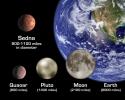
|
-
PIA05567:
-
Sedna Size Comparisons (Artist's Concept)
Full Resolution:
TIFF
(11.78 MB)
JPEG
(695 kB)
|

|
2004-03-15 |
Sedna
|
|
Samuel Oschin Telescope
|
2480x900x3 |
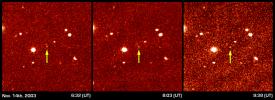
|
-
PIA05568:
-
Sedna Discovery Image
Full Resolution:
TIFF
(2.333 MB)
JPEG
(564.4 kB)
|

|
2004-03-15 |
Sedna
|
|
Samuel Oschin Telescope
|
2499x2499x3 |
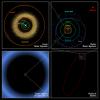
|
-
PIA05569:
-
Sedna Orbit Comparisons
Full Resolution:
TIFF
(2.507 MB)
JPEG
(554.8 kB)
|

|
2007-04-27 |
Sol (our sun)
|
Solar TErrestrial RElations Observatory (STEREO)
|
SECCHI/Extreme Ultraviolet Imaging Telescope
|
1920x1080x3 |
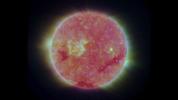
|
-
PIA09320:
-
Full Disk Image of the Sun, March 26, 2007
Full Resolution:
TIFF
(6.23 MB)
JPEG
(110.4 kB)
|

|
2007-04-27 |
Sol (our sun)
|
Solar TErrestrial RElations Observatory (STEREO)
|
SECCHI/Extreme Ultraviolet Imaging Telescope
|
1920x1080x3 |
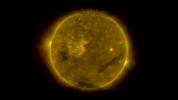
|
-
PIA09321:
-
Full Disk Image of the Sun, March 26, 2007 (Anaglyph)
Full Resolution:
TIFF
(6.23 MB)
JPEG
(91.3 kB)
|

|
2007-04-27 |
Sol (our sun)
|
Solar TErrestrial RElations Observatory (STEREO)
|
SECCHI/Extreme Ultraviolet Imaging Telescope
|
1920x1080x3 |
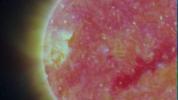
|
-
PIA09322:
-
Close-up View of an Active Region of the Sun, March 23, 2007
Full Resolution:
TIFF
(6.23 MB)
JPEG
(116 kB)
|

|
2007-04-27 |
Sol (our sun)
|
Solar TErrestrial RElations Observatory (STEREO)
|
SECCHI/Extreme Ultraviolet Imaging Telescope
|
1920x1080x3 |
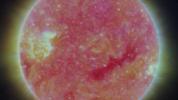
|
-
PIA09324:
-
Closer View of the Equatorial Region of the Sun, March 24, 2007
Full Resolution:
TIFF
(6.23 MB)
JPEG
(129.6 kB)
|

|
2007-04-27 |
Sol (our sun)
|
Solar TErrestrial RElations Observatory (STEREO)
|
SECCHI/Extreme Ultraviolet Imaging Telescope
|
1920x1080x3 |
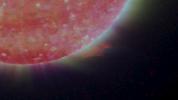
|
-
PIA09326:
-
Right Limb of the South Pole of the Sun, March 18, 2007
Full Resolution:
TIFF
(6.23 MB)
JPEG
(85.81 kB)
|

|
2007-04-27 |
Sol (our sun)
|
Solar TErrestrial RElations Observatory (STEREO)
|
SECCHI/Extreme Ultraviolet Imaging Telescope
|
1920x1080x3 |
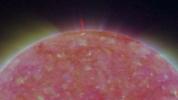
|
-
PIA09328:
-
North Pole of the Sun, March 20, 2007
Full Resolution:
TIFF
(6.23 MB)
JPEG
(94.86 kB)
|

|
2007-04-27 |
Sol (our sun)
|
Solar TErrestrial RElations Observatory (STEREO)
|
SECCHI/Extreme Ultraviolet Imaging Telescope
|
1920x1080x3 |
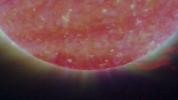
|
-
PIA09330:
-
South Pole of the Sun, March 20, 2007
Full Resolution:
TIFF
(6.23 MB)
JPEG
(94.62 kB)
|

|
2007-04-27 |
Sol (our sun)
|
Solar TErrestrial RElations Observatory (STEREO)
|
SECCHI/Extreme Ultraviolet Imaging Telescope
|
1920x1080x3 |
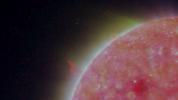
|
-
PIA09332:
-
Left Limb of North Pole of the Sun, March 20, 2007
Full Resolution:
TIFF
(6.23 MB)
JPEG
(84.33 kB)
|

|
2007-04-27 |
Sol (our sun)
|
Solar TErrestrial RElations Observatory (STEREO)
|
SECCHI/Extreme Ultraviolet Imaging Telescope
|
1920x1080x3 |
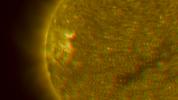
|
-
PIA09323:
-
Close-up View of an Active Region of the Sun, March 23, 2007 (Anaglyph)
Full Resolution:
TIFF
(6.23 MB)
JPEG
(145.6 kB)
|

|
2007-04-27 |
Sol (our sun)
|
Solar TErrestrial RElations Observatory (STEREO)
|
SECCHI/Extreme Ultraviolet Imaging Telescope
|
1920x1080x3 |
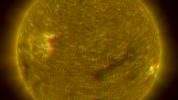
|
-
PIA09325:
-
Closer View of the Equatorial Region of the Sun, March 24, 2007 (Anaglyph)
Full Resolution:
TIFF
(6.23 MB)
JPEG
(169.6 kB)
|

|
2007-04-27 |
Sol (our sun)
|
Solar TErrestrial RElations Observatory (STEREO)
|
SECCHI/Extreme Ultraviolet Imaging Telescope
|
1920x1080x3 |
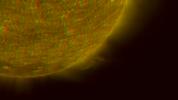
|
-
PIA09327:
-
Right Limb of the South Pole of the Sun, March 18, 2007 (Anaglyph)
Full Resolution:
TIFF
(6.23 MB)
JPEG
(99.1 kB)
|

|
2007-04-27 |
Sol (our sun)
|
Solar TErrestrial RElations Observatory (STEREO)
|
SECCHI/Extreme Ultraviolet Imaging Telescope
|
1920x1080x3 |
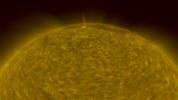
|
-
PIA09329:
-
North Pole of the Sun, March 20, 2007 (Anaglyph)
Full Resolution:
TIFF
(6.23 MB)
JPEG
(126.2 kB)
|

|
2007-04-27 |
Sol (our sun)
|
Solar TErrestrial RElations Observatory (STEREO)
|
SECCHI/Extreme Ultraviolet Imaging Telescope
|
1920x1080x3 |
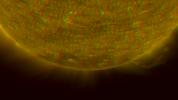
|
-
PIA09331:
-
South Pole of the Sun, March 20, 2007 (Anaglyph)
Full Resolution:
TIFF
(6.23 MB)
JPEG
(114.9 kB)
|

|
2007-04-27 |
Sol (our sun)
|
Solar TErrestrial RElations Observatory (STEREO)
|
SECCHI/Extreme Ultraviolet Imaging Telescope
|
1920x1080x3 |
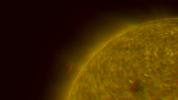
|
-
PIA09333:
-
Left Limb of North Pole of the Sun, March 20, 2007 (Anaglyph)
Full Resolution:
TIFF
(6.23 MB)
JPEG
(89.44 kB)
|

|
2016-07-11 |
|
Galaxy Evolution Explorer (GALEX)
|
SDSS
Very Large Array (VLA)
|
3858x2170x3 |
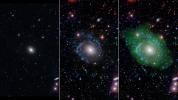
|
-
PIA20695:
-
Frankenstein Galaxy
Full Resolution:
TIFF
(18.72 MB)
JPEG
(1.023 MB)
|

|
2009-10-02 |
|
Herschel Space Observatory
|
SPIRE
|
1266x1266x3 |
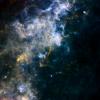
|
-
PIA12252:
-
Dark Wombs of Stars
Full Resolution:
TIFF
(4.814 MB)
JPEG
(115.8 kB)
|

|
2009-10-02 |
|
Herschel Space Observatory
|
SPIRE
|
3816x3689x3 |
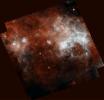
|
-
PIA12253:
-
Dark Star-Making Factory
Full Resolution:
TIFF
(42.23 MB)
JPEG
(526.4 kB)
|

|
2012-05-17 |
|
Herschel Space Observatory
|
SPIRE
|
6898x3880x3 |
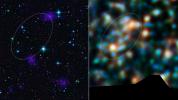
|
-
PIA15659:
-
A Star-Bursting Filament
Full Resolution:
TIFF
(80.29 MB)
JPEG
(2.074 MB)
|

|
2013-01-28 |
M31
|
Herschel Space Observatory
|
SPIRE
|
2800x1575x3 |
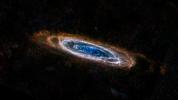
|
-
PIA16681:
-
Andromeda's Colorful Rings
Full Resolution:
TIFF
(13.24 MB)
JPEG
(368 kB)
|

|
2025-04-01 |
Sky
|
SPHEREx
|
Spectro-Photometer
|
2708x1754x3 |
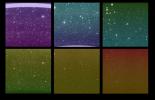
|
-
PIA26280:
-
First Images From NASA's SPHEREx
Full Resolution:
TIFF
(6.303 MB)
JPEG
(1.066 MB)
|

|
2025-05-01 |
Sky
|
SPHEREx
|
Spectro-Photometer
|
960x537x3 |

|
-
PIA26351:
-
SPHEREx Scans the Sky
Full Resolution:
TIFF
(934.8 kB)
JPEG
(63.32 kB)
|

|
2025-05-01 |
Sky
|
SPHEREx
|
Spectro-Photometer
|
2280x1282x3 |

|
-
PIA26352:
-
SPHEREx's Dust Cloud Reveal
Full Resolution:
TIFF
(4.221 MB)
JPEG
(428.7 kB)
|

|
2025-07-02 |
Sky
|
SPHEREx
|
Spectro-Photometer
|
3406x1684x3 |

|
-
PIA26354:
-
SPHEREx Vela Molecular Ridge
Full Resolution:
TIFF
(17.03 MB)
JPEG
(878.8 kB)
|

|
2012-10-03 |
|
Spitzer Space Telescope
|
Spitzer Space Telescope
|
3000x2400x3 |
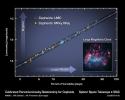
|
-
PIA15819:
-
Cepheids as Cosmology Tools
Full Resolution:
TIFF
(21.61 MB)
JPEG
(453.3 kB)
|

|
2013-09-05 |
|
Spitzer Space Telescope
|
Spitzer Space Telescope
|
3200x1800x3 |
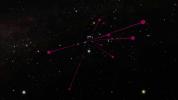
|
-
PIA17259:
-
Brown Dwarf Backyardigans
Full Resolution:
TIFF
(17.29 MB)
JPEG
(245.3 kB)
|

|
2014-03-26 |
|
Spitzer Space Telescope
|
Spitzer Space Telescope
|
930x886x3 |
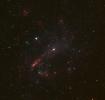
|
-
PIA17997:
-
Bulgeless Galaxy Hides Black Hole
Full Resolution:
TIFF
(2.473 MB)
JPEG
(70.62 kB)
|

|
2014-11-10 |
|
Spitzer Space Telescope
|
Spitzer Space Telescope
|
3300x4000x3 |

|
-
PIA18900:
-
Sibling Star Systems? Dust Structures Suggest So
Full Resolution:
TIFF
(39.62 MB)
JPEG
(590.8 kB)
|

|
2015-08-20 |
|
Spitzer Space Telescope
|
Spitzer Space Telescope
|
3050x2630x3 |
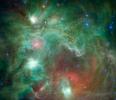
|
-
PIA19836:
-
Seeing Beyond the 'Monkey Head'
Full Resolution:
TIFF
(24.08 MB)
JPEG
(444.6 kB)
|

|
2015-08-20 |
|
Spitzer Space Telescope
|
Spitzer Space Telescope
|
4800x2700x3 |
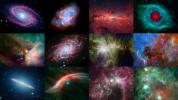
|
-
PIA19872:
-
NASA's Spitzer 12th Anniversary Space Calendar
Full Resolution:
TIFF
(38.9 MB)
JPEG
(1.945 MB)
|

|
2015-11-03 |
|
Spitzer Space Telescope
|
Spitzer Space Telescope
|
3400x3400x3 |
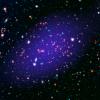
|
-
PIA20052:
-
A Giant Gathering of Galaxies
Full Resolution:
TIFF
(28.34 MB)
JPEG
(1.319 MB)
|

|
2016-08-29 |
|
Spitzer Space Telescope
|
Spitzer Space Telescope
|
1200x675x3 |
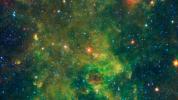
|
-
PIA20914:
-
Age-Defying Star
Full Resolution:
TIFF
(2.431 MB)
JPEG
(173 kB)
|

|
2016-09-08 |
|
Spitzer Space Telescope
|
Spitzer Space Telescope
|
2125x1195x3 |
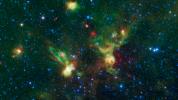
|
-
PIA20917:
-
Enterprising Nebulae
Full Resolution:
TIFF
(7.622 MB)
JPEG
(457.3 kB)
|

|
2016-09-28 |
Abell 2744
|
Spitzer Space Telescope
|
Spitzer Space Telescope
|
1233x693x3 |
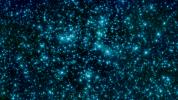
|
-
PIA20920:
-
'Pandora's Cluster' Seen by Spitzer
Full Resolution:
TIFF
(2.192 MB)
JPEG
(142.8 kB)
|

|
2019-03-05 |
|
Spitzer Space Telescope
|
Spitzer Space Telescope
|
2412x1713x3 |
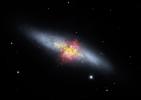
|
-
PIA23010:
-
The Cigar Galaxy's Magnetic Field
Full Resolution:
TIFF
(3.914 MB)
JPEG
(132.4 kB)
|

|
2019-04-25 |
Messier 87
|
Spitzer Space Telescope
|
Spitzer Space Telescope
|
3226x1814x3 |
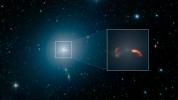
|
-
PIA23122:
-
Spitzer Captures Messier 87
Full Resolution:
TIFF
(11.32 MB)
JPEG
(324.5 kB)
|

|
2019-09-30 |
|
Spitzer Space Telescope
|
Spitzer Space Telescope
|
3250x3250x3 |
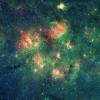
|
-
PIA23402:
-
Spitzer Spots Bubbles and Bow Shocks
Full Resolution:
TIFF
(31.7 MB)
JPEG
(1.693 MB)
|

|
2019-10-30 |
|
Spitzer Space Telescope
|
Spitzer Space Telescope
|
1041x586x3 |

|
-
PIA23403:
-
The Jack-o-Lantern Nebula
Full Resolution:
TIFF
(1.756 MB)
JPEG
(118.5 kB)
|

|
2019-12-19 |
|
Spitzer Space Telescope
|
Spitzer Space Telescope
|
15950x6500x3 |
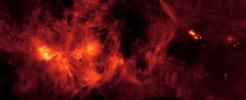
|
-
PIA23405:
-
Perseus Molecular Cloud
Full Resolution:
TIFF
(178.3 MB)
JPEG
(7.177 MB)
|

|
2020-01-22 |
|
Spitzer Space Telescope
|
Spitzer Space Telescope
|
5760x3240x3 |
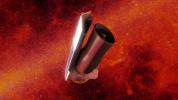
|
-
PIA23643:
-
Spitzer Space Telescope (Illustration)
Full Resolution:
TIFF
(50.38 MB)
JPEG
(1.553 MB)
|

|
2020-01-27 |
|
Spitzer Space Telescope
|
Spitzer Space Telescope
|
8832x4968x3 |
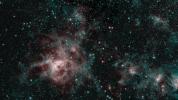
|
-
PIA23646:
-
Tarantula Nebula Spitzer 2-Color Image
Full Resolution:
TIFF
(112.2 MB)
JPEG
(5.08 MB)
|

|
2020-01-27 |
|
Spitzer Space Telescope
|
Spitzer Space Telescope
|
8832x4968x3 |
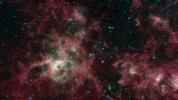
|
-
PIA23647:
-
Tarantula Nebula Spitzer 3-Color Image
Full Resolution:
TIFF
(126.6 MB)
JPEG
(4.053 MB)
|

|
2020-04-09 |
|
Spitzer Space Telescope
|
Spitzer Space Telescope
|
3840x2160x3 |
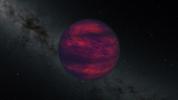
|
-
PIA23684:
-
Spitzer Brown Dwarf Wind (Artist's Concept)
Full Resolution:
TIFF
(13.09 MB)
JPEG
(543.8 kB)
|

|
2020-04-17 |
|
Spitzer Space Telescope
|
Spitzer Space Telescope
|
3317x1902x3 |
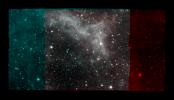
|
-
PIA23650:
-
Spitzer California Nebula Mosaic
Full Resolution:
TIFF
(12.09 MB)
JPEG
(759 kB)
|

|
2020-04-28 |
|
Spitzer Space Telescope
|
Spitzer Space Telescope
|
5120x2880x3 |
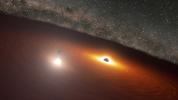
|
-
PIA23687:
-
Animation of Black Hole Disk Flare in OJ 287
Full Resolution:
TIFF
(25.34 MB)
JPEG
(648 kB)
|

|
2020-08-25 |
|
Spitzer Space Telescope
|
Spitzer Space Telescope
|
2000x1125x3 |
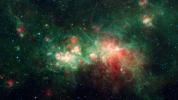
|
-
PIA23865:
-
Spitzer Image of Star Factory W51
Full Resolution:
TIFF
(6.752 MB)
JPEG
(432.4 kB)
|

|
2021-08-17 |
|
Spitzer Space Telescope
|
Spitzer Space Telescope
|
4800x2700x3 |
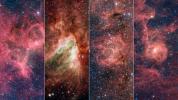
|
-
PIA24577:
-
Four Famous Nebulae
Full Resolution:
TIFF
(38.9 MB)
JPEG
(2.529 MB)
|

|
2021-10-25 |
|
Spitzer Space Telescope
|
Spitzer Space Telescope
|
3542x3542x3 |
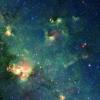
|
-
PIA24579:
-
Godzilla Nebula Imaged by Spitzer
Full Resolution:
TIFF
(37.65 MB)
JPEG
(2.228 MB)
|

|
2022-01-13 |
|
Spitzer Space Telescope
|
Spitzer Space Telescope
|
1600x900x3 |
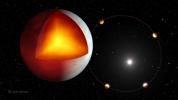
|
-
PIA24580:
-
Exoplanet XO-3b Illustration
Full Resolution:
TIFF
(1.902 MB)
JPEG
(102.6 kB)
|

|
2022-03-18 |
|
Spitzer Space Telescope
|
Spitzer Space Telescope
|
3840x2160x3 |
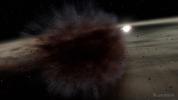
|
-
PIA25161:
-
Planetesimal Collison Around Star HD 166191 (Illustration)
Full Resolution:
TIFF
(9.714 MB)
JPEG
(282.3 kB)
|

|
2024-05-09 |
|
Spitzer Space Telescope
|
Spitzer Space Telescope
|
16151x6971x3 |
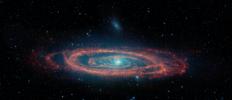
|
-
PIA26276:
-
The Infrared Face of the Andromeda Galaxy
Full Resolution:
TIFF
(185.7 MB)
JPEG
(11.39 MB)
|

|
2016-01-05 |
|
Spitzer Space Telescope
Wide-field Infrared Survey Explorer (WISE)
|
Spitzer Space Telescope
WISE Telescope
|
2106x706x3 |
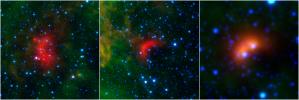
|
-
PIA20062:
-
Bow Shocks in Space
Full Resolution:
TIFF
(4.022 MB)
JPEG
(177.7 kB)
|

|
2017-02-22 |
|
Spitzer Space Telescope
|
TRAPPIST
|
3200x4000x3 |

|
-
PIA21421:
-
Abstract Concept of TRAPPIST-1 System
Full Resolution:
TIFF
(13.91 MB)
JPEG
(422.5 kB)
|

|
2017-02-22 |
|
Spitzer Space Telescope
|
TRAPPIST
|
6000x3000x3 |
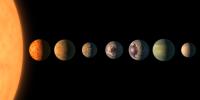
|
-
PIA21422:
-
TRAPPIST-1 Planet Lineup
Full Resolution:
TIFF
(11.88 MB)
JPEG
(487.1 kB)
|

|
2017-02-22 |
|
Spitzer Space Telescope
|
TRAPPIST
|
4534x2550x3 |
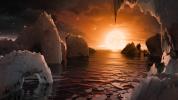
|
-
PIA21423:
-
Surface of TRAPPIST-1f
Full Resolution:
TIFF
(27.53 MB)
JPEG
(1.016 MB)
|

|
2017-02-22 |
|
Spitzer Space Telescope
|
TRAPPIST
|
5295x2978x3 |
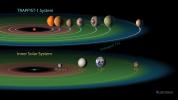
|
-
PIA21424:
-
The TRAPPIST-1 Habitable Zone
Full Resolution:
TIFF
(10.46 MB)
JPEG
(624.5 kB)
|

|
2017-02-22 |
|
Spitzer Space Telescope
|
TRAPPIST
|
5104x2871x3 |
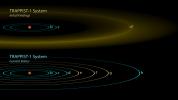
|
-
PIA21426:
-
The Discovery of TRAPPIST-1 Planets
Full Resolution:
TIFF
(3.828 MB)
JPEG
(491 kB)
|

|
2017-02-22 |
|
Spitzer Space Telescope
|
TRAPPIST
|
1621x911x3 |
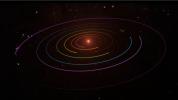
|
-
PIA21427:
-
TRAPPIST-1 Planetary Orbits and Transits
Full Resolution:
TIFF
(1.411 MB)
JPEG
(61.72 kB)
|

|
2017-02-22 |
|
Spitzer Space Telescope
|
TRAPPIST
|
4500x3600x3 |
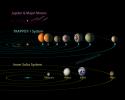
|
-
PIA21428:
-
TRAPPIST-1 Comparison to Solar System and Jovian Moons
Full Resolution:
TIFF
(3.612 MB)
JPEG
(646.9 kB)
|

 Planetary Data System
Planetary Data System



















































































































